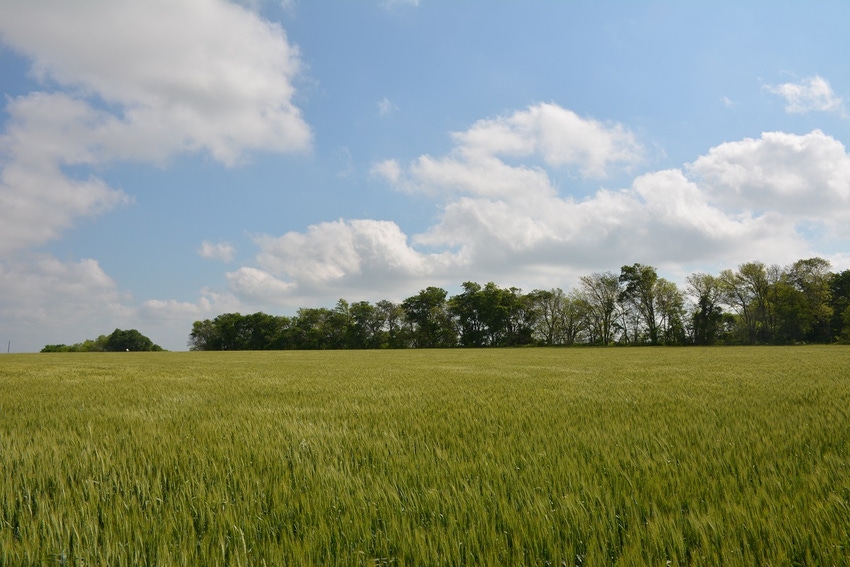April 21, 2016

Once upon a time, two market factors controlled the prices received by wheat farmers: the KC wheat contract price and the basis.
The KC July wheat contract price story overshadowed the basis story. When wheat prices got low, the basis became the most important story. But, few people realized the basis role in the cash price.
The price story starts in June 2008 with an $8 KC wheat contract price. During the period from January 2009 to July 2010, that contract traded mostly between $4.53 and $6. In August 2010, an uptrend was established, peaking at $9.90.
Then, KC prices traded between $6 and $9.90 until a downtrend was established in December 2012. That downside trend was recently broken by a sideways pattern, ranging between $4.38 and $5.21 in August 2015.
At this writing, the KC wheat contract price appears to have established a price floor at about $4.30. Even if that contract price goes below $4.30, it isn’t expected to stay below $4.30 for very long.
For the latest on southwest agriculture, please check out Southwest Farm Press Daily and receive the latest news right to your inbox.
The basis story may also have its beginning in June 2008, when it was minus 72 cents (Dacoma, Okla. published basis).
WIDE-RANGING BASIS
During summer and fall 2008, when the KC (nearby) futures contract price was dropping from $8 to $4.40, the basis was going from minus 72 cents to minus $1.02. By August 2010, the KC futures contract price had increased to $8.23, and the basis had declined to a minus $1.33.
Between June 2010 and April 2016, the basis range has been between minus 1 cent (June 2013) and minus $1.33 (August 2010).
At this writing, the Dacoma basis is minus 73 cents, and the forward contract basis for 2016 harvest delivered wheat is minus 68 cents.
Also at this writing, the KC May contract (nearby) is used to determine Dacoma’s cash price ($4.80-$0.73=$4.07). The KC July contract price is used to determine Dacoma’s harvest forward contract price ($4.90–68=$4.22). The harvest contract price is 15 cents higher than the current cash price. Ten cents of the 15 cents is due to the July contract price being 10 cents higher than the May contract price. The other five cents is because the forward contract basis is five cents higher than the current basis.
The stories of the KC contract price and the basis join at the local elevator. Looking forward to the 2016/17 wheat marketing year, the starting point is the KC July wheat contract price ($4.90) and the forward contract basis (-68 cents).
A POTENTIAL BAD ENDING
KC wheat contract price history indicates that the futures contract price floor is about $4.30. This implies that the Dacoma cash price could decline from the harvest forward contract price ($4.22) to $3.62 due to the KC wheat contract price declining from $4.90 to $4.30.
Basis history shows that the basis floor is near minus $1.27 (June 15, 2010), which means the cash price could decline 59 cents ($1.27-$0.68) due to a lower basis. The history also shows that the basis may be just as important as the KC futures contract when determining the local cash price.
Combining the potential declines for both the KC futures price and the basis implies that the Dacoma cash price could decline to $3.03.
Factors that could cause both stories to exhibit the worst case scenario, with a cash price of $3.03, would be a large, poor quality U.S. hard red winter wheat crop. This would force a large percentage of the wheat now in storage into the feed market.
The result: a bad ending when the two stories are combined.
About the Author(s)
You May Also Like






